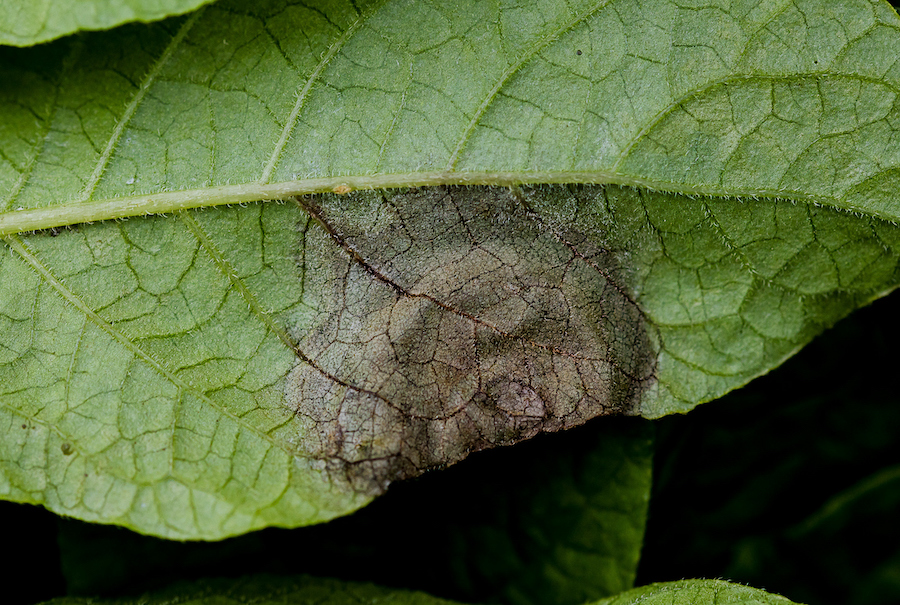Late blight: Threat of resistant strains in Europe looms
23rd November 2023
Population monitoring has revealed little change in the British late blight population during 2023, but the threat from resistant strains in Europe looms large and will require the use of robust anti-resistance fungicide strategies next year.

In June, potato growers and agronomists were informed that the vital Fight Against Blight (FAB) service – which monitors late blight genotypes and shifts in fungicide sensitivity – would continue after securing industry sponsorship.
FAB project leader David Cooke presented this year’s results at the British Potato Event in Harrogate on the stands of Certis Belchim and UPL.
He reported no significant population changes in GB during 2023, with 36_A2 (51%) and 6_A1 (34%) still dominating the 830 genotypes isolated from 1,500 samples sent to FAB at the James Hutton Institute in Dundee.
Further good news for British growers is that the genotype EU_43_A1 – which is insensitive to CAA-inhibitor fungicides like mandipropamid – has still not shown up in FAB sampling.
Sensitivity testing of the main GB genotypes against five key fungicide actives (ametoctradin, amisulbrom, oxathiapiprolin, propamocarb and zoxamide) is led by JHI’s Alison Lees and she found no efficacy concerns this year.
However, preliminary information from Euroblight shows EU_43_A1’s presence is increasing on the continent, accompanied by difficulties in controlling it.
Corteva has also confirmed resistance to oxathiapiprolin, contained in products like Zorvec Enicade, in some parts of northern continental Europe, including the Netherlands, Belgium and northeast Germany.
Confirmation of a single finding of EU_43_A1 in a sample taken at Teagasc’s research station at Carlow, Ireland, further fuels concern about this genotype’s continued spread across Europe.
It will make planning fungicide strategy much more complicated in the future.
“Control programmes here in GB will need much more careful consideration for 2024,” David concluded.
Balanced programmes
James Cheesman, technical manager at Certis Belchim, said the news across the channel means GB growers must use all modes of action available when constructing balanced programmes.
These fungicide groups should be mixed and alternated as much as possible, and incorporating multisite inhibitor mancozeb will also be important.
He added that the use of fluazinam, in products like Shirlan, declined slightly following the discovery of insensitive genotype 37_A2, but it failed to establish widely.
Fluazinam remains effective against dominant GB genotypes, and against the threat of EU_43_A1 if it establishes itself next season.
“That makes products like Shirlan an ideal partner for groups affected by resistance, like CAA-inhibitors, which should continue to have a place in programmes.
“Resistance management remains key, so when using Ranman Top (cyazofamid) – the leading product for the control of tuber blight – growers should always mix it with an alternative mode of action.
“Cymoxanil and propamocarb are good partner options, either alone or in combination, depending on blight pressure. Both actives will help protect the long-term efficacy of cyazofamid,” said James.

